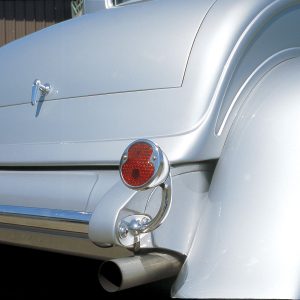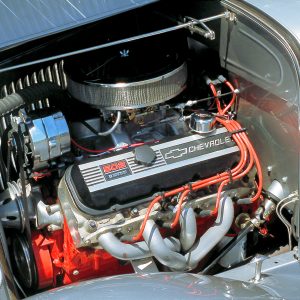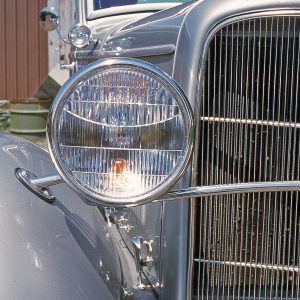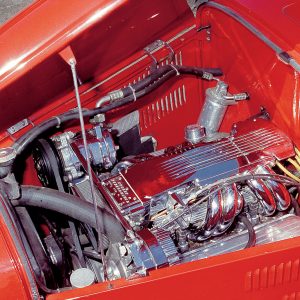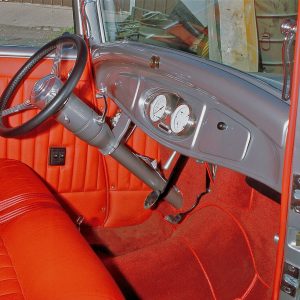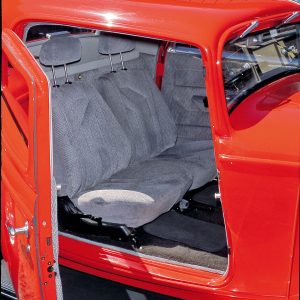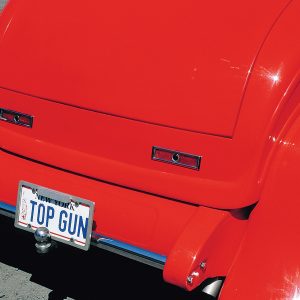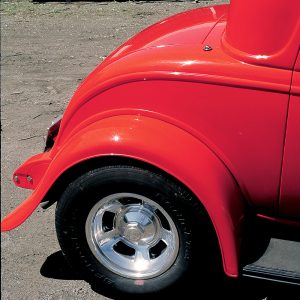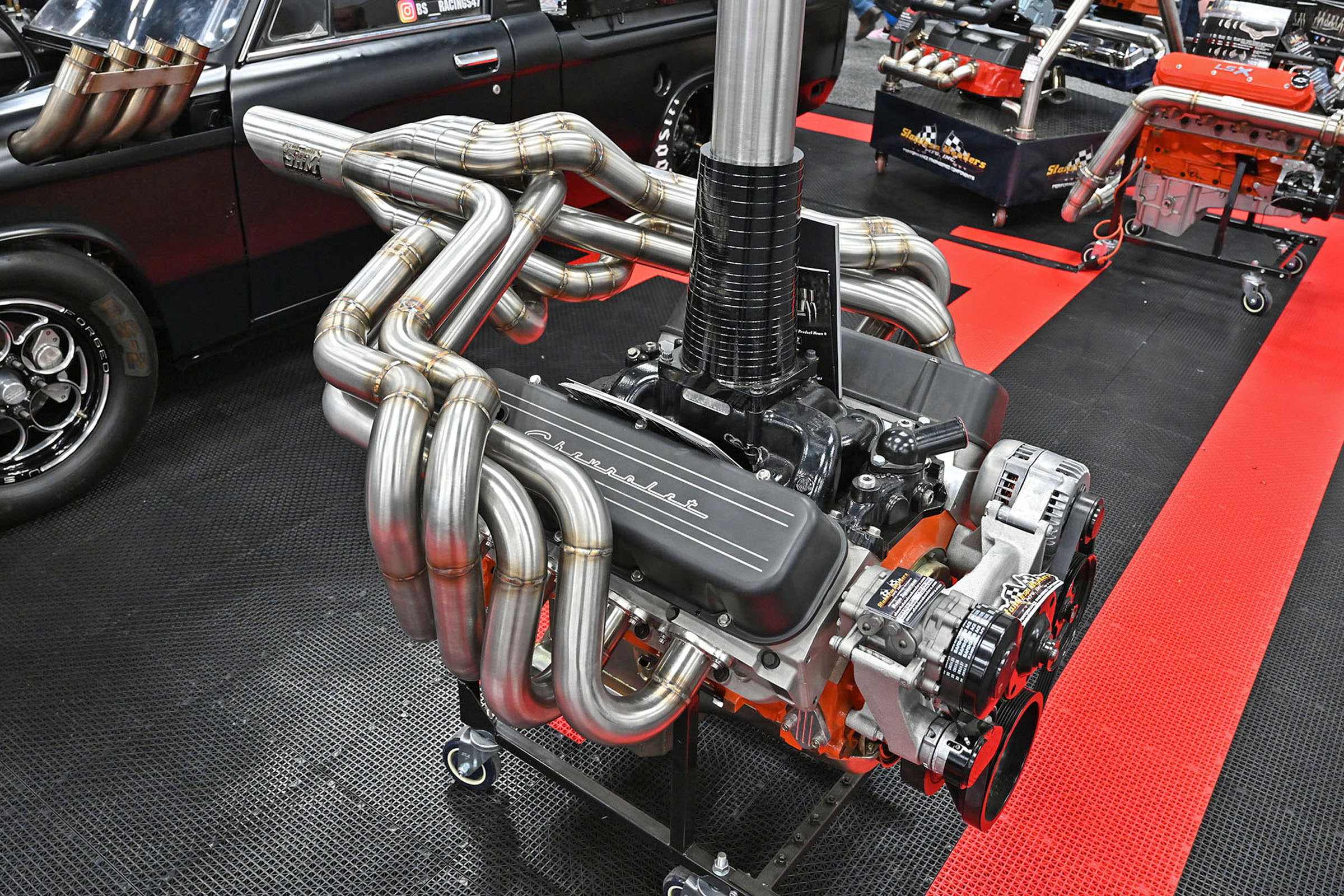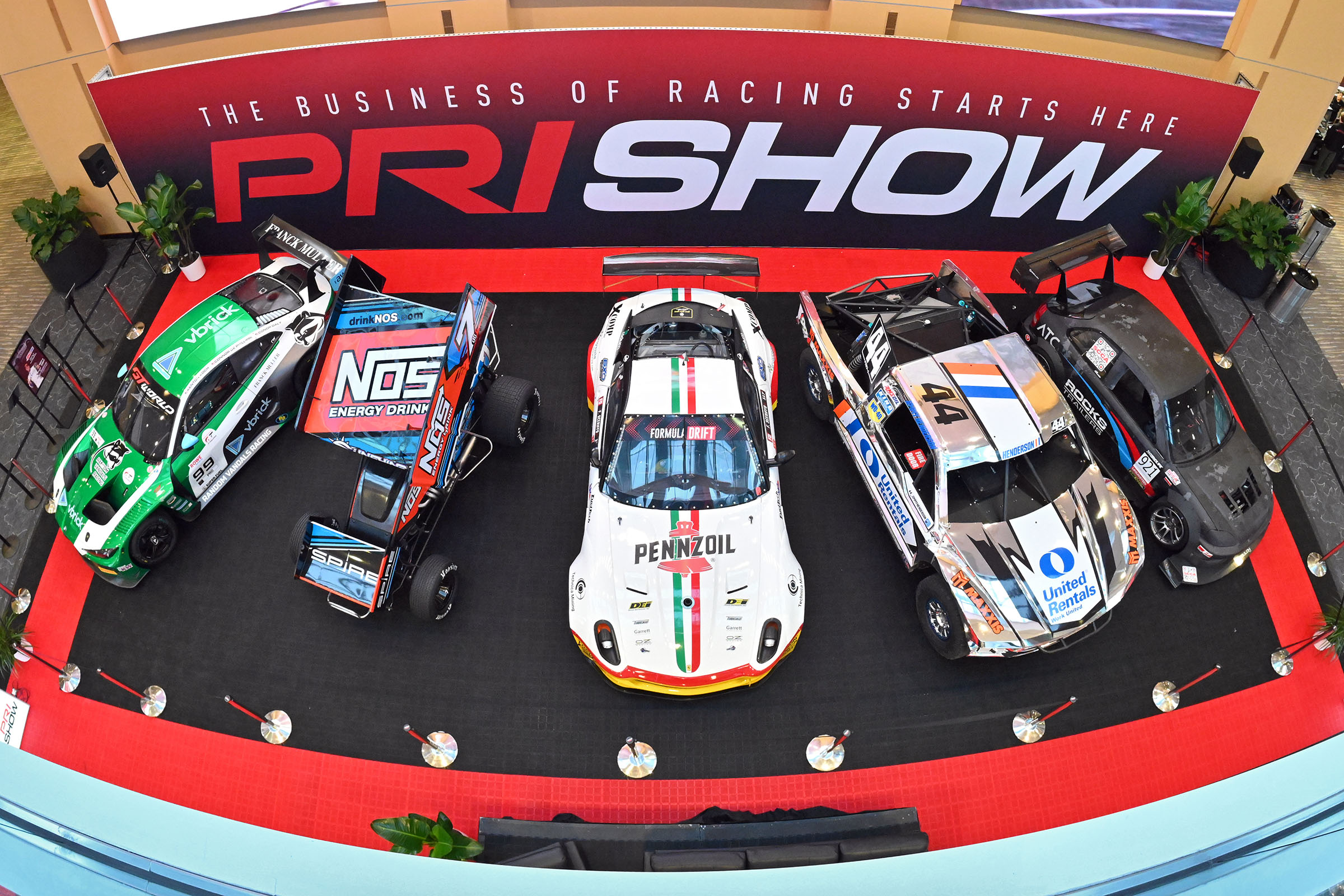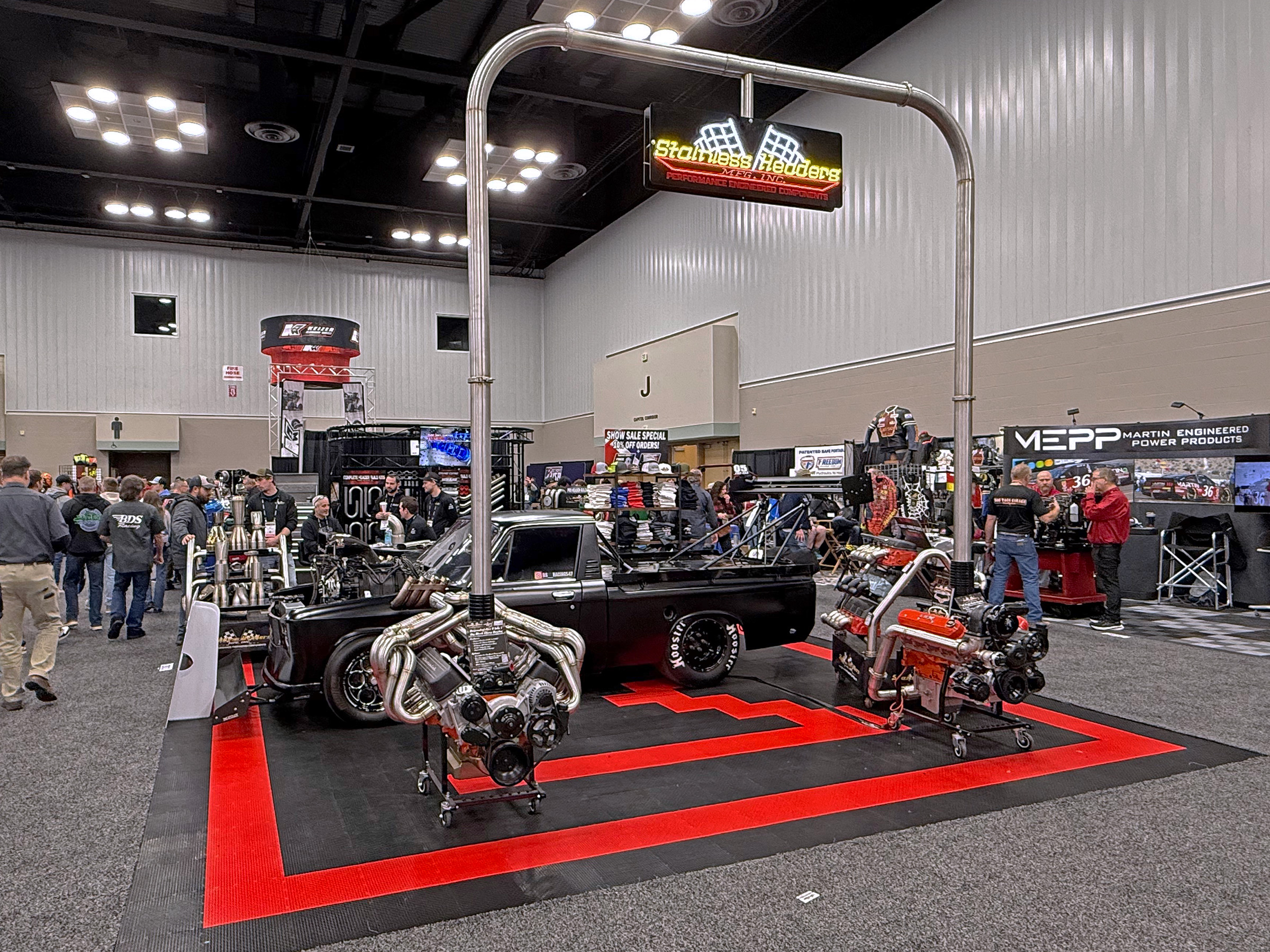The Results of Long Hours—Years, Even—of Searching for Real, Vintage Tin
Story and Photography by Charlie Hughes
Hardcore rodders have a history of searching for vintage tin, even though the number of old cars (and trucks) sitting behind barn doors, in fields, under tarps and alongside garages has dwindled as interest has increased. This steady decline of available vintage steel is the very reason why so many businesses presently produce fiberglass and steel reproduction bodies and body parts.
Looking back, the roots of our hobby have always involved reminiscing over photographs of old roadsters and coupes, and the result is that your average rodder is quick to point out our hobby was founded on the ’32 Ford—roadster, coupe or sedan. Imagine the experience and the time involved, following up lead after lead, only to one day open the door of an old garage to face the familiar shape of a ’32 Ford grille, attached to a barn-fresh vehicle. Such finds do occur, although more infrequently now.
Gary Robertson has six Deuces in his garage in Burdett, New York, a small community nestled in the heart of the Finger Lakes wine country region just north of Watkins Glen, and he searched for every one. All six are real, original steel 1932 Fords. Robertson and his wife, Betty, are the proud owners of three Vicky sedans, two three-window coupes and a five-window coupe, all of them hot rods. He didn’t acquire these cars overnight; he spent years chasing down leads, requiring countless hours, effort and patience. But now when he rolls back the door on his garage, it’s an impressive sight: six ’32 Ford grilles on full-fender hot rods, all side by side.
Robertson enjoys reliving the stories of how he found his cars, even those he passed up along the way. When he brought a barn-fresh five-window coupe home in the back of a stake-bodied truck in ’03, the body was in such good condition that it could have been placed directly on a repro rolling chassis and taken out for a local cruise night.
In addition to the Fords, there’s another ’32 in the Robertson stable: a Pontiac coupe he purchased in ’04 at the NSRA Nats East. It was in such good condition that he just couldn’t pass it up. So the collection is growing in numbers and interest. Here’s two of Robertson’s three-windows, chosen because they are driven most often.

SILVER COUPE
There’s a story accompanying nearly every old rod, and this ’32 Ford three-window is no different. Would you believe this was once a police car? According to Robertson, the coupe was a patrol unit for the state police in South Dakota.
Robertson was chasing down other ’32 Ford tin when he learned of this car. The lead eventually took him to a retired patrol car. When he found it there was still a faint state police logo on the doors, a shotgun rack inside and two spotlights mounted on the outside. To add to its heritage, a couple of bullet holes were found in the bottom of the driver’s door. No one knows if those holes were the result of a confrontation with a bad guy or if they occurred after the car was taken out of service. The car was solid and rust free. After getting it home, a complete makeover followed, resulting in this beautiful DuPont Mercedes Silver Deuce. Robertson says it’s his favorite. He also said that when he first saw the car, he knew he wanted to keep the exterior stock, so the original appearance was maintained except for the wheels.
Robertson contacted John Birosh in nearby Penn Yan, New York, for the frame. A longtime chassis builder from Indiana, Birosh retired to Penn Yan and works on cars in his expanded home garage. It wasn’t long after he settled into retirement that word of his relocation got around the rodding community, and soon there was a steady stream of customers seeking chassis work.
American Stamping chassis rails were purchased, and Birosh began by fabricating a four-bar front suspension, using Posies springs, Carrera shocks and Wilwood disc brakes on Magnum spindles. He made custom crossmembers front and rear and built a four-link rear suspension to mount a 9-inch Ford rear axle housing, for which the gear assembly was built by Gary Tyler. Birosh then made the shafts to mate the Mullins steering box to an ididit column.
While the chassis was in progress, Robertson ordered a Street & Performance ported and polished 502 Chevy. A Holley 650 carburetor was chosen for the polished GM high-rise intake manifold, along with chrome and billet dressup parts. Robertson and friend Marvin Secord then began polishing everything on the engine, while Birosh fashioned a stainless exhaust system. Secord rebuilt a Turbo 400 trans for the coupe.
Halibrand aluminum wheels were wrapped with BFGoodrich rubber, and they blend nicely with the silver exterior. Halogen bulbs were placed in the headlights, along with the turn signals. The coupe was then sent to Scott Bailey in Waverly, New York, for painting. With a straight body to work with, the prep still involved many long hours for the silver finish. Next the coupe went to Flyboyz Street Rod Designs in Horseheads, New York, where owner Brian Schuler began sewing the red leather to cover the Glide seat and the door panels. To go with the new interior, red wool carpeting was selected.
A Ron Francis wiring kit was installed by Birosh, and he also made the clutch, brake and gas pedals. A LeCarra banjo-style wheel tops the ididit column, and gauges from Classic Instruments fit the original dashboard. The only non-original pieces on the exterior are the peep mirrors from So-Cal. Robertson said the bumpers and other trim pieces were in exceptional condition, and they greatly enhance the silver coupe’s rich appearance. Nevertheless, hours were spent polishing them, and those pieces not up to Robertson’s standards were replated or replaced.
Once completed, the coupe became the vehicle of choice whenever the Robertsons traveled to their Adirondack Mountains cabin for a getaway weekend, and it is driven about 5,000 miles a year. Life’s little simplicities are what please the Robertsons, and driving this coupe is one of those pleasures. We can see why.

RED COUPE
The second Robertson three-window is a chopped version. There’s nothing flamboyant here—just a great, functional driver. With work in progress on the silver coupe, Robertson found this steel ’32 and arranged for its delivery. Knowing it would also become a hot rod, Robertson wanted the car to be a direct contrast to the silver coupe. To accomplish this, 2-1/2 inches were sliced from the top by bodyman Scott Bailey, who also gets credit for spraying the smooth Ford Truck Red finish. Bailey found prepping the body to be a routine task due to its excellent condition. For Robertson, the search for pristine ’32s is all about the hunt. Finding the tin is almost as much fun as driving the finished rod.
As with many projects, when you have a formula that works, you follow the old adage, “If it ain’t broke, don’t fix it.” With this in mind, Robertson again called on John Birosh and asked him to do the chassis work on this ’32. Birosh boxed the frame and added custom crossmembers and a Mustang II front suspension with rack-and-pinion steering. The stock Mustang coils are assisted by Carrera shocks, and the brakes are Wilwood disc assemblies. Steering chores are handled by a 1980 Mustang column and wheel.
After some lengthy discussion with Birosh, Robertson decided on a ’67 Corvette IRS. The system was modified to include Volvo inboard brakes, and Carrera shocks cushion the ride. Birosh made the driveshaft connecting the Turbo 400 transmission with a Gear Vendor overdrive to the ’98 Chevy 350 TPI. Robertson again called on Street & Performance for his small block. The engine’s exterior surfaces were ground and smoothed, and a liberal dose of engine dressup goodies provides sparkle beneath the three-piece hood, which sports a couple of rows of louvers along the sides. Birosh made the stainless exhaust system for this coupe as well.
Turning to the exterior after the chop, Robertson selected King Bee headlights with a pair of motorcycle turn signals for front lighting. In the rear, Chevelle side-marker lights were converted to taillights. Like the silver coupe, this ’32 rides on Halibrands and BFGoodrich tires.
Robertson decided that he would do the interior and installed a set of VDO instruments in the stock dash. He also installed a Ron Francis wiring kit and power window units from Juliano. Next he mounted a Sony stereo in an overhead console, and Bailey built a pair of custom armrests for the door panels. Robertson covered the interior in a light gray velour, with darker gray carpeting. Cool air is provided by Vintage Air, and there are two innocent-looking levers that allow Robertson to open cutouts in the exhaust system.
While the silver coupe maintains its original look, this three-window runs without any exterior trim, except for the chrome spreader bar, door handles and grille. Though Robertson will tell you he favors his silver coupe, he also believes the red one should be driven. So he frequently asks a friend to drive it to shows, while he drives the silver car. The coupes are often seen traveling New York highways, and could there be a finer sight than a pair of Deuce coupes touring along any one of the scenic highways that wind through New York’s Finger Lakes region? Gary Robertson’s three-window coupes contrast nicely—one looking rather stock, and the other chopped with obvious hot rod roots.
Article Sources
American Stamping Corporation
(662) 895-5300
75 Downing Street, Suite A Olive Branch, MS 38654 Email: sales@ascrails.com
Street & Performance Inc
facebook.com/streetandperformanceinc/
(479) 394-5711
1 Hot Rod Ln Mena, AR, 71953-9423








